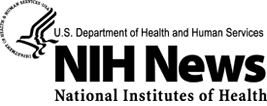Last updated: April 11, 2011
NIH researchers identify cause and new treatment for common recurrent fever in children

NIH researchers identify cause and new treatment for common recurrent fever in children
Therapy for periodic fever syndrome targets the body's immune response

The proposed treatment, which will be validated in a larger study before it is recommended in treating PFAPA syndrome, wards off an inappropriate immune system attack without increasing the frequency of flare-ups, a problem caused by the current standard treatment with corticosteroids. The team of researchers from the National Human Genome Research Institute (NHGRI) and the National Institute of Arthritis and Musculoskeletal and Skin Diseases (NIAMS) reported their findings in the April 8, 2011, early online edition of the Proceedings of the National Academy of Sciences.
"Until now, the basis of PFAPA has been a mystery," said senior author and NHGRI Scientific Director Daniel Kastner, M.D., Ph.D. "Advances in genomic analysis have allowed us to define a major role for the innate immune system, the body's first line of defense against infection. Targeting a specific product of white blood cells at the first sign of fever appears to abort the attacks."
Children with PFAPA syndrome experience attacks of fever, each lasting three to six days, usually three to eight weeks apart. Their predictability is so regular that parents have been known to make pediatric appointments a week ahead of when they expect their child to experience a PFAPA episode. Affected children experience their first attack before the age of 5, with fever episodes usually abating in adolescence or young adulthood. The only remedy for PFAPA, besides corticosteroids, is removal of an affected child's tonsils, which has a good rate of success in eliminating PFAPA syndrome, but is an invasive alternative.
The new experimental treatment resulted from the researchers using a systems biology approach, which entailed gene and protein expression and cell biology analysis in carefully selected patient and healthy control subjects, to determine the underlying disturbance of the immune system. They analyzed patient blood samples to detect which gene and protein networks are involved in the cell signaling and metabolic pathways activated in the disease.
The research group studied 21 patients with PFAPA syndrome along with an equal number of healthy children and 12 children with a distinctly different set of hereditary fever syndromes. They analyzed gene expression during episodes of fever and intervening periods when the children were well. The analysis revealed gene expression profiles that uniquely identified PFAPA immune response.
"Gene profiles during PFAPA flares are remarkably distinct from when children are asymptomatic," said Dr. Kastner, noting that the analysis also distinguished PFAPA syndrome from other periodic fevers. But when PFAPA patients are asymptomatic, their gene expression is similar to healthy children.
During PFAPA flare ups, the researchers detected activation of both forms of immune response — the innate, first-line-of-defense immunity, and adaptive immunity, which is the body's ability to detect and remember an infection in order to fight it later. This dual response supports the idea that the fevers of PFAPA are an immunologic response to some external stimulus, possibly related to microbial infection.
The researchers looked for biological markers that would indicate the onset of a flare-up of fever in children with PFAPA. During PFAPA flare-ups, the researchers detected decreased numbers of activated T cells, white blood cells that play a role in the cell's innate immune response. They suspect that these activated T cells migrated to the lymph nodes in the neck, where they accumulate. They also detected over-expression of genes activated in innate immune responses, including interleukin-1, a molecule that is important in triggering fever and inflammation.
From these data, the researchers hypothesized that anakinra, a drug that prevents interleukin-1 from binding to its receptor, could be therapeutic. They administered anakinra by injection to five children on the second day of their PFAPA fevers and all showed a reduction in fever and inflammatory symptoms within hours.
"The anakinra treatment has the potential to restore these children to a mostly symptom-free childhood," said Dr. Kastner. "The comprehensive analysis of gene expression during PFAPA attacks would not have been possible without the tools created by the Human Genome Project, and the possibility of an effective treatment is yet another of the genome project's many dividends."
A larger clinical trial for the use of anakinra in treating this periodic fever syndrome is planned, Dr. Kastner said.
NHGRI is one of the 27 institutes and centers at the NIH, an agency of the Department of Health and Human Services. The NHGRI Division of Intramural Research develops and implements technology to understand, diagnose and treat genomic and genetic diseases. Additional information about NHGRI can be found at its website, www.genome.gov.
The mission of the NIAMS, a part of the U.S. Department of Health and Human Services' National Institutes of Health (NIH), is to support research into the causes, treatment, and prevention of arthritis and musculoskeletal and skin diseases; the training of basic and clinical scientists to carry out this research; and the dissemination of information on research progress in these diseases. For more information about the NIAMS, call the information clearinghouse at (301) 495-4484 or (877) 22-NIAMS (free call) or visit the NIAMS website at www.niams.nih.gov.
About the National Institutes of Health (NIH): NIH, the nation's medical research agency, includes 27 Institutes and Centers and is a component of the U.S. Department of Health and Human Services. NIH is the primary federal agency conducting and supporting basic, clinical, and translational medical research, and is investigating the causes, treatments, and cures for both common and rare diseases. For more information about NIH and its programs, visit www.nih.gov.
Contact
Raymond MacDougall, NHGRI
301-402-0911
macdougallr@mail.nih.gov
